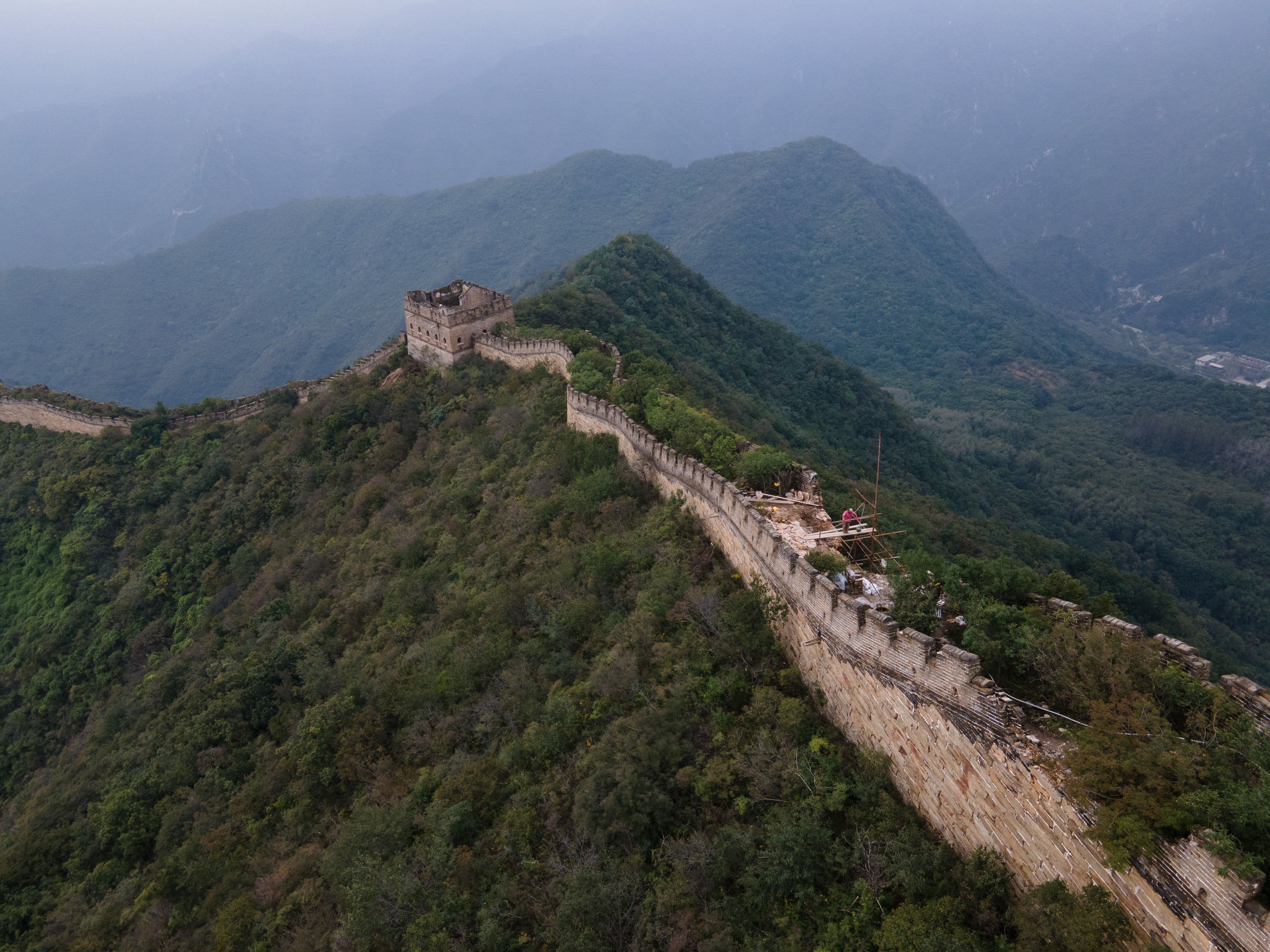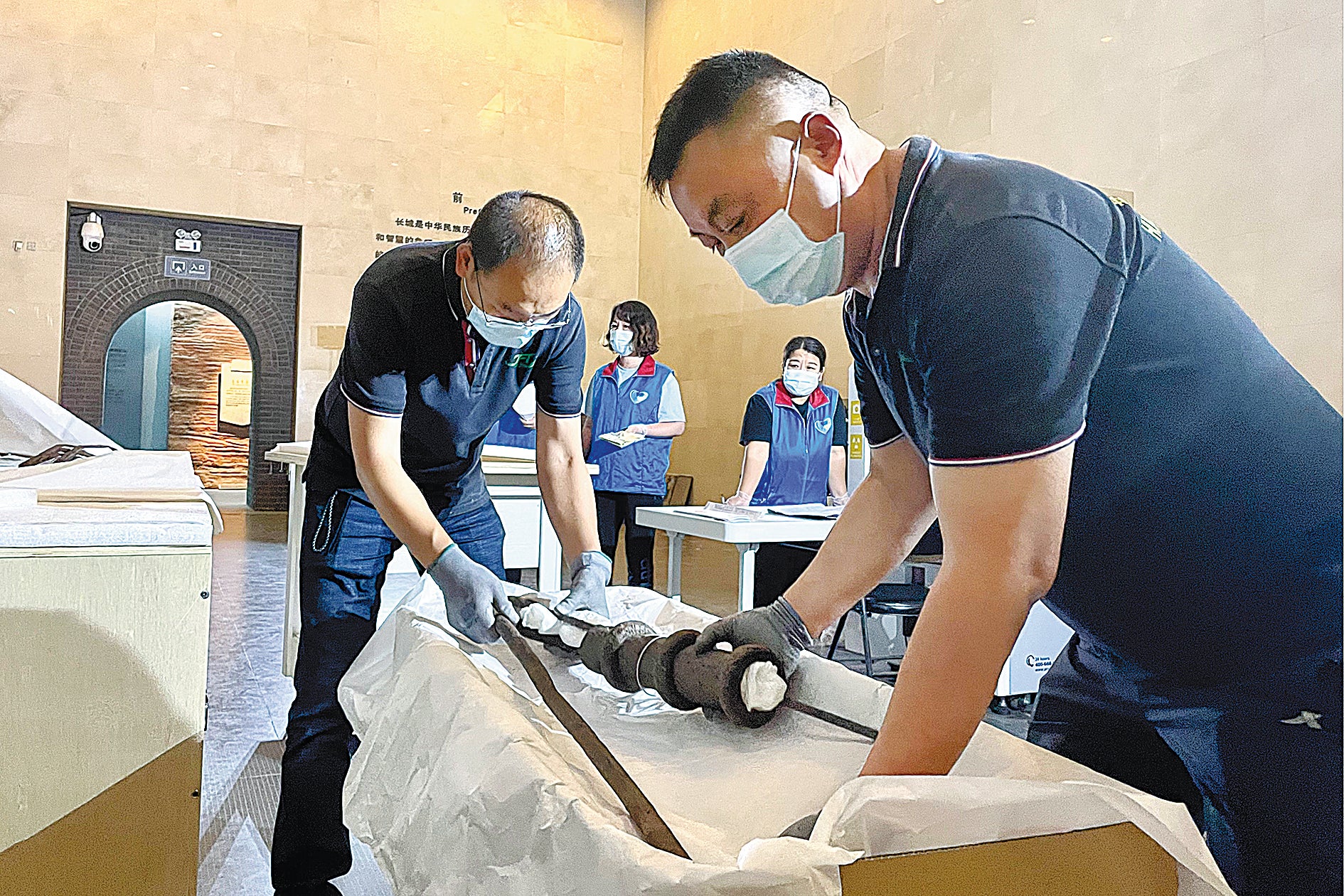Museum face-lift to offer new perspective of Great Wall
THE ARTICLES ON THESE PAGES ARE PRODUCED BY CHINA DAILY, WHICH TAKES SOLE RESPONSIBILITY FOR THE CONTENTS

The Great Wall, more than 13,000 miles long and standing as a symbol of China, has been the subject of numerous legends over the centuries.
To offer a new perspective of the UNESCO World Heritage Site, the China Great Wall Museum, which stands at the foot of the structure’s Badaling section in Yanqing district, Beijing, is being given a major face-lift.
Wei Hua, 43, assistant curator of the museum, said: “The Great Wall has been preserved for generations. As someone who was born and raised in this area, I hope our generation can make a bigger effort to protect the wall and better integrate the lives of those living near it with the structure’s deep-rooted culture.”
After the renovation is completed the museum is expected to stand on an area of about four acres. Located on a 33ft-high terrace in a valley, the museum is about a quarter of a mile from the entrance to the Badaling Great Wall. However, it attracts far fewer visitors than the wall.
“A rough estimate showed us that only 8 per cent of visitors to the wall’s Badaling section visited our museum, which prompted the renovation work,” he said.
Overall planning for the museum improvements began at the start of 2020.

The main aim of the face-lift is to showcase the history of the Great Wall and to house artefacts found on the structure from the Warring States Period (475-221 BC) to the Qing Dynasty (1644-1911).
“People are aware of the Great Wall, but few understand its heritage,” said Tang Yuyang, a professor at Beijing University of Civil Engineering and Architecture. “A well-established museum with a viewing platform for the Great Wall can attract tourists.”
In view of the proximity of the museum and the Great Wall, Tang said heritage protection rules are being strictly observed.
“After the museum is upgraded, its overall area will not exceed the existing space. We have submitted a report to the World Heritage Committee explaining our approach to renovating the museum.”
Three main areas of the venue will be open to the public after the renovation – an exhibition hall, a visitors’ centre and a Great Wall international research and exchange institute, Wei said among the projects scheduled for the museum upgrading, the most compelling is an exhibition of the Great Wall’s history.
As a defence against nomadic groups in the northern region of ancient China, the wall was built by generations of Chinese dating to the Warring States Period, when the Qi state built walls made of hard-packed soil to defend its borders.
During the Qin Dynasty (221-206 BC), Qinshihuang, the first Chinese emperor, restored, connected and accelerated construction of large parts of the wall built during the Warring States Period. He also extended the border to the north to protect his territory.
In 141 BC, when Emperor Wu of the Han Dynasty (206 BC to AD 220) took power, he sent generals and troops to defend territory against the northern nomadic Xiongnu people. He also extended the Great Wall and built beacon towers on the structure.
In the following 1,000 years, emperors strengthened and improved the wall, mainly to ward off northern invaders. Parts of it were renovated as building techniques progressed.
During the Ming Dynasty (1368-1644) construction of the wall reached a peak, with stones, marble blocks and granite being used. Watchtowers and platforms were also built.
Dong Yaohui, deputy chairman of the China Great Wall Association, said: “Historically, the Great Wall prevented the number and scale of wars, forming a great defence against opposing armies. As civilisation progressed, the wall had a reduced military function. It played a much bigger role in strengthening the connection between farmers and nomads.
“The Great Wall is a spiritual icon for Chinese people, but most of them are unfamiliar with its historical development and its connection with our nation. The wall deserves a well-considered plan to showcase these features.”
Subscribe to Independent Premium to bookmark this article
Want to bookmark your favourite articles and stories to read or reference later? Start your Independent Premium subscription today.
